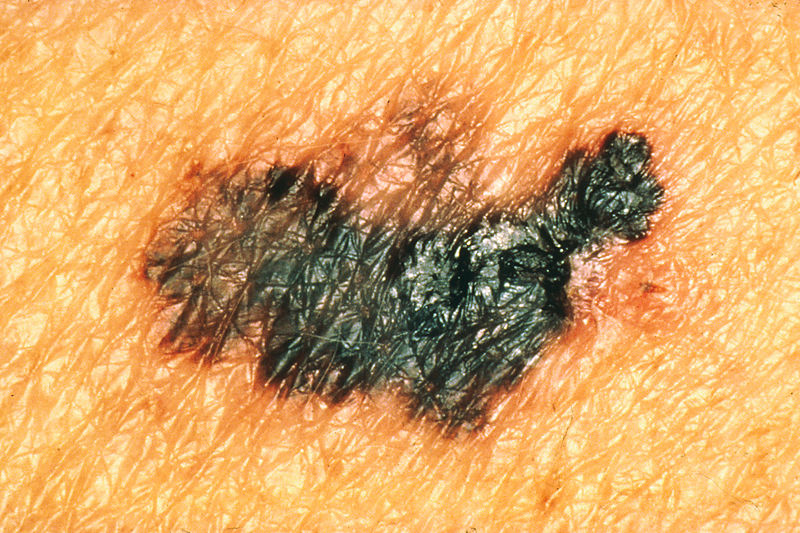A key cog in the molecular machinery that drives the development of melanoma has been found, potentially offering a new therapeutic target.
Writing in the journal Nature, Harvard scientist Craig Ceol and his colleagues explain how they first homed in on a region of chromosome 1 that is frequently found to be abnormal in melanoma patients. Specifically, parts of this genomic region are often duplicated, increasing the numbers of copies of certain genes within the affected area. But because at least 17 different genes are affected in this way, homing in on which ones might be responsible for triggering tumour formation has been very difficult.
 Instead, the US team turned to a tankful of aquarium zebrafish to solve the problem. These stripey study subjects naturally have melanin-producing cells - called melanocytes - which they use them to pattern their skins. And by painstakingly altering the fish so that they carried a mutation in a gene called BRAF, which has previously linked to human melanomas, alongside all the different combinations of the 17 genes duplicated on human chromosome number 1 in melanoma patients, a feat which required over 3000 fish, the researchers found that the animals developed aggressive skin tumours when just one gene, called SETDBI, was added.
Instead, the US team turned to a tankful of aquarium zebrafish to solve the problem. These stripey study subjects naturally have melanin-producing cells - called melanocytes - which they use them to pattern their skins. And by painstakingly altering the fish so that they carried a mutation in a gene called BRAF, which has previously linked to human melanomas, alongside all the different combinations of the 17 genes duplicated on human chromosome number 1 in melanoma patients, a feat which required over 3000 fish, the researchers found that the animals developed aggressive skin tumours when just one gene, called SETDBI, was added.
Analysing human melanoma cells also confirmed that the same gene was duplicated in more than 70% of samples the team tested. Further experiments showed that it was also regulating the activity of at least 67 other genes, many of which control other genes and biochemical pathways linked to growth and cell division. This suggests, say the researchers, that it represents a powerful target for the development of novel therapies targeting melanoma, current survival from which is dismal. Numbers of cases of the disease have also grown by over 100% in the last 15 years.










Comments
Add a comment